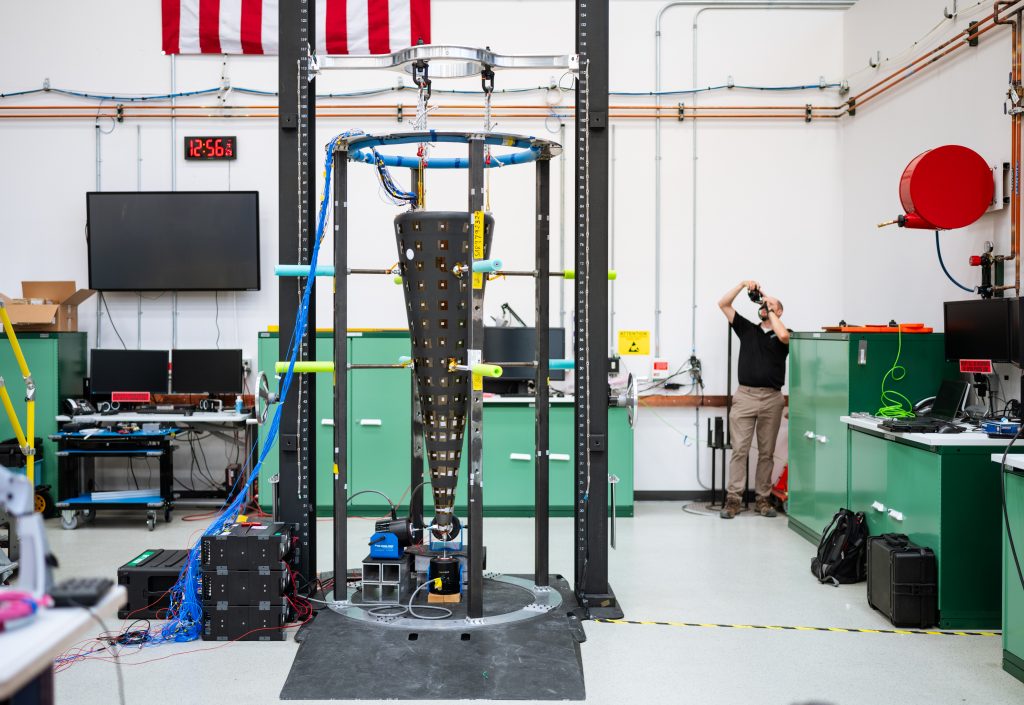Sandia National Laboratories serves a unique role in the nuclear security enterprise: lead systems integrator for the nuclear weapons program. The systems integrator ensures that the many complex parts of the weapon and its delivery vehicle work together flawlessly, and that system performance is optimized across all the requirements. It's an important role.

"Sandia has the responsibility to establish clearly defined system interfaces so that subsystems will interact as expected and function as designed," said Laura McGill, deputy Labs director for Nuclear Deterrence and chief technology officer.
Sandia does not have design authority for the nuclear explosive packages that are controlled by Lawrence Livermore National Laboratory or Los Alamos National Laboratory but works closely with design agency partners to develop allocated requirements that are balanced to best meet the specified military characteristics.
"The role of lead systems integrator doesn't mean we make all the decisions. Our responsibility is to ensure that key decisions are anticipated and get made when needed, to keep the program on track. And if there is disagreement, we quickly elevate those to the senior management teams for resolution to prevent program delays," McGill said.
The integrator is especially important in the current environment where many elements of the nuclear security enterprise are pushing against available capacity.
As McGill said, "We have to make the best use of our enterprise resources. We cannot demand excessively large quantities of development hardware from the Kansas City National Security Campus for development and integration when they are already delivering at maximum rate to meet production requirements."
W87-1

As the systems integrator, Sandia facilitates discussions on schedules and activities, including required testing for weapon systems.
"Sandia provides an environment for positive interactions and conversations," said Scott Lindblom, a senior manager in nuclear deterrence.
Lindblom said Sandia recently completed a system baseline design review knowledge gap analysis on the W87-1, which is replacing the W78. Following that process, two system-level tests were deferred until later in the program, while one was accelerated to provide quicker knowledge gap closure. Another test was canceled because it would not provide additional data to support baseline design readiness.
"The systems integrator role is about moving the program forward. We're checking ourselves to ensure we don't have excess work plans," Lindblom said. He echoed McGill's sentiment about the role Sandia plays as systems integrator: "Most of the time we're not the decision maker; we are there to make sure the decision is made."
More than design
Sandia's role as the lead systems integrator extends past the development and design phase to include the operational sustainment phase.
Sandia is responsible for technical integration related to the weapon for the entire lifecycle of a system - until the weapon is retired from the stockpile and fully dismantled and dispositioned.
As systems integrator, Sandia works with the other eight labs, plants and sites, as well as NNSA offices, federal program managers, the Department of Defense and the military services that will use the systems.
"As the weapon ages, we identify subtle effects on performance that must be addressed. As the systems integrator, we work with our partners to establish solutions that account for all system implications, including potential changes to procedures for the military operators," McGill said.
Why Sandia?
Sandia applies the principles of "always/never" across a weapon system, meaning when authorized for use, the weapons will always work as intended, and they will never work under any other circumstances. This obligation requires close collaboration between Sandia and defense contractors.
"We have the direct interface with the prime contractors that provide the delivery platforms," McGill said. "We develop a deep understanding of overall vehicle performance."
From a broader perspective, NNSA's digital engineering initiative aims to use common tools and establish a digital thread for the entire nuclear security enterprise, which will help streamline Sandia's systems integrator role. For example, a design change will more quickly make it to the production agency.
"The role of systems integrator only works when you have great partners," McGill said. "Our relationships with the other labs, plants and sites and NNSA are critical to our ability to deliver on our commitments to the nation."






